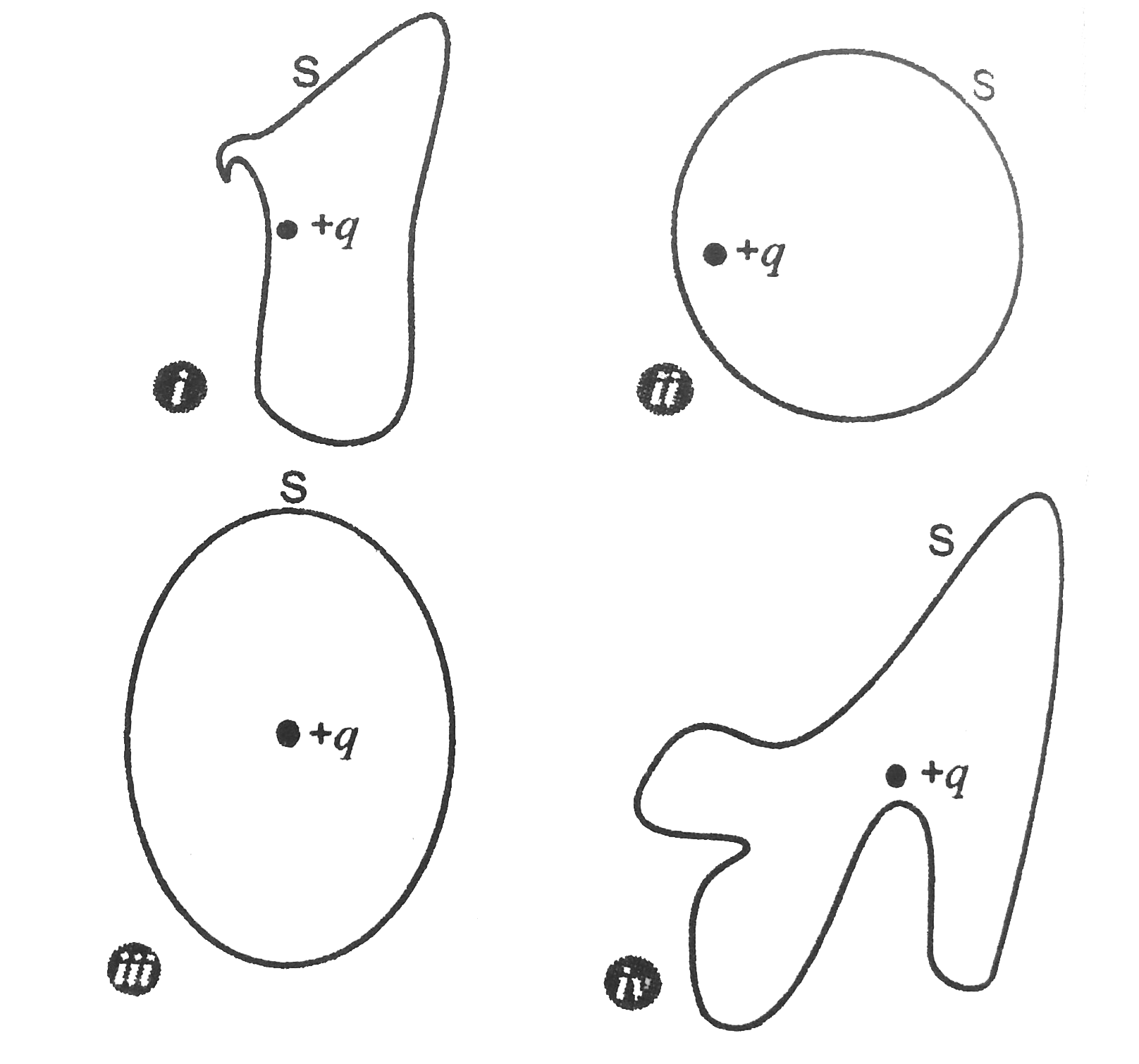An arbitrary surface encloses a dipole. What is the electric flux through this surface ?
To solve the problem of finding the electric flux through an arbitrary surface that encloses a dipole, we can follow these steps:
Step 1: Understand the Concept of Electric Flux
Electric flux (Φ) through a surface is defined as the integral of the electric field (E) over that surface. Mathematically, it is expressed as:
Φ=∫E⋅dS
where dS is a differential area vector on the surface.
Step 2: Apply Gauss's Law
According to Gauss's Law, the electric flux through a closed surface is proportional to the total charge enclosed by that surface:
Φ=Qencϵ0
where Qenc is the total charge enclosed and ϵ0 is the permittivity of free space.
Step 3: Analyze the Dipole
A dipole consists of two equal and opposite charges, say +Q and -Q. Therefore, when we consider a closed surface that encloses the dipole, the total charge Qenc is:
Qenc=+Q+(−Q)=0
Step 4: Calculate the Electric Flux
Since the total enclosed charge is zero, we can substitute this into Gauss's Law:
Φ=Qencϵ0=0ϵ0=0
Conclusion
Thus, the electric flux through the arbitrary surface that encloses the dipole is:
Φ=0
---
Electric flux (Φ) through a surface is defined as the integral of the electric field (E) over that surface. Mathematically, it is expressed as:
Φ=∫E⋅dS
where dS is a differential area vector on the surface.
According to Gauss's Law, the electric flux through a closed surface is proportional to the total charge enclosed by that surface:
Φ=Qencϵ0
where Qenc is the total charge enclosed and ϵ0 is the permittivity of free space.
A dipole consists of two equal and opposite charges, say +Q and -Q. Therefore, when we consider a closed surface that encloses the dipole, the total charge Qenc is:
Qenc=+Q+(−Q)=0
Since the total enclosed charge is zero, we can substitute this into Gauss's Law:
Φ=Qencϵ0=0ϵ0=0
Thus, the electric flux through the arbitrary surface that encloses the dipole is:
Φ=0
Topper's Solved these Questions
- ELECTRIC CHARGES AND FIELDBOOK - NCERT EXEMPLAR ENGLISHCHAPTER - ELECTRIC CHARGES AND FIELDEXERCISE - Short Answer Type question
6 Videos
- ELECTRIC CHARGES AND FIELDBOOK - NCERT EXEMPLAR ENGLISHCHAPTER - ELECTRIC CHARGES AND FIELDEXERCISE - Long Answer Type Question
6 Videos
- ELECTRIC CHARGES AND FIELDBOOK - NCERT EXEMPLAR ENGLISHCHAPTER - ELECTRIC CHARGES AND FIELDEXERCISE - MCQ s (More than One Options)
6 Videos
- DUAL NATURE OF RADIATION AND MATTERBOOK - NCERT EXEMPLAR ENGLISHCHAPTER - DUAL NATURE OF RADIATION AND MATTEREXERCISE - LONG ANSWER TYPE QUESTION
5 Videos
- ELECTROMAGNETIC INDUCTION BOOK - NCERT EXEMPLAR ENGLISHCHAPTER - ELECTROMAGNETIC INDUCTION EXERCISE - Long
11 Videos
Similar Questions
The electric flux through the surface

View SolutionThe electric flux through the surface

View SolutionThe electric flux through the surface

View SolutionA surface encloses an electric dipole. The electric flux through the surface is
View SolutionA point charge of 2.0μC is at center of a cublic Gaussian surface 9.0 cm on edge. What is the net electric flux through the surface?
View SolutionA surface enclosed an electric dipole, the flux through the surface is -
View SolutionA closed surface encloses a net charge of −3.60μC. What is the net electric flux through the surface?
(b) The electric flux through a closed surface is found to be 780N−m2/C. What quantity of charge is enclosed by the surface?
(c) The closed surface in part (b) is a cube with sides of length 2.50 cm. From the information given in part (b), is it possible to tell where within the cube the charge is located? Explain.
View SolutionA Gaussian surface encloses a proton p. The electric field at any point on the surface is →€. The flux linked with the Gaussian surface is ϕ.
STATEMENT-1 : When an electron is kept close to this system outside the Gaussian surface, the flux linked with the surface would change.
and
STATEMENT-2 : The presence of electron will alterthe electric field on the gaussian surface.
View SolutionAn electric dipole of diople moment 20×10−6Cm is enclosed by a closed surface. What is the net electric flux coming out of the surface ?
View SolutionA uniform electric field aˆi+bˆj intersects a surface of area A. What is the flux through this area if the surface lies (a) in the yz plane, (b) in the xz plane, (c) in the xy plane?
View Solution
